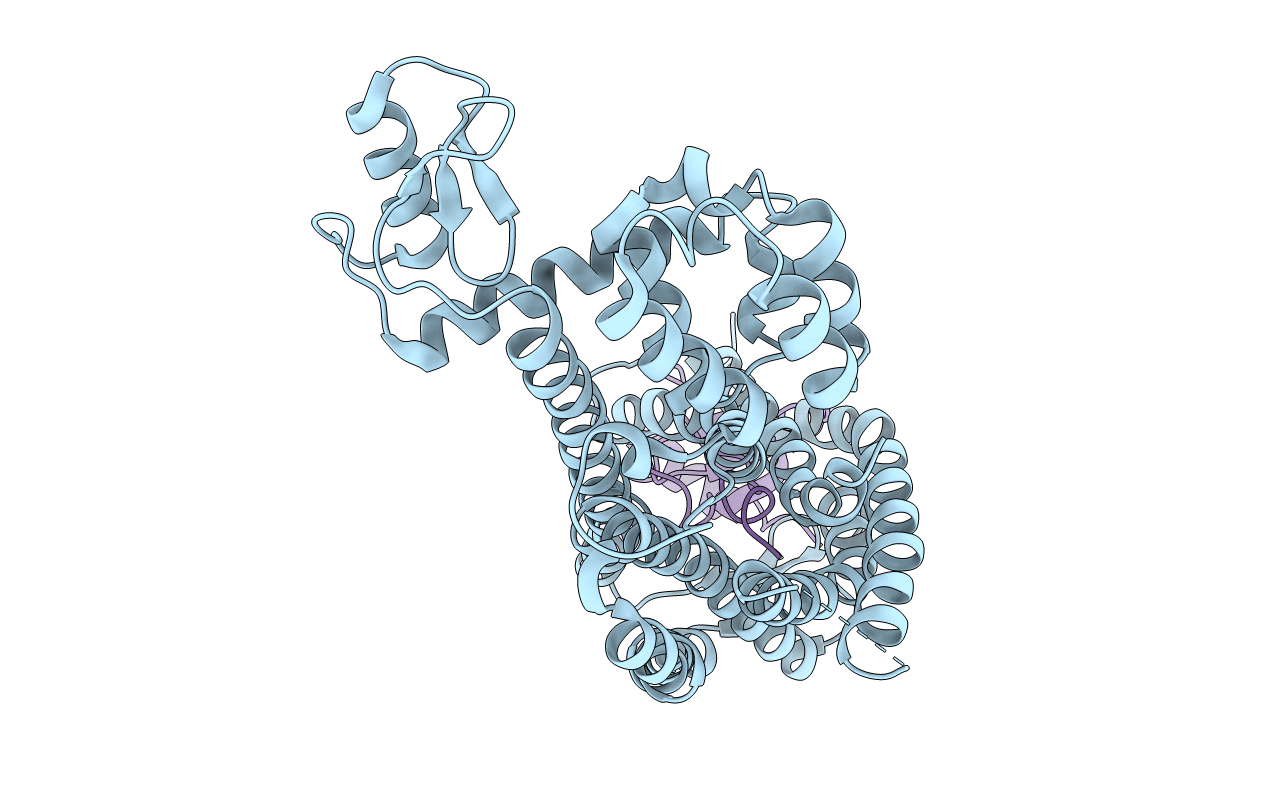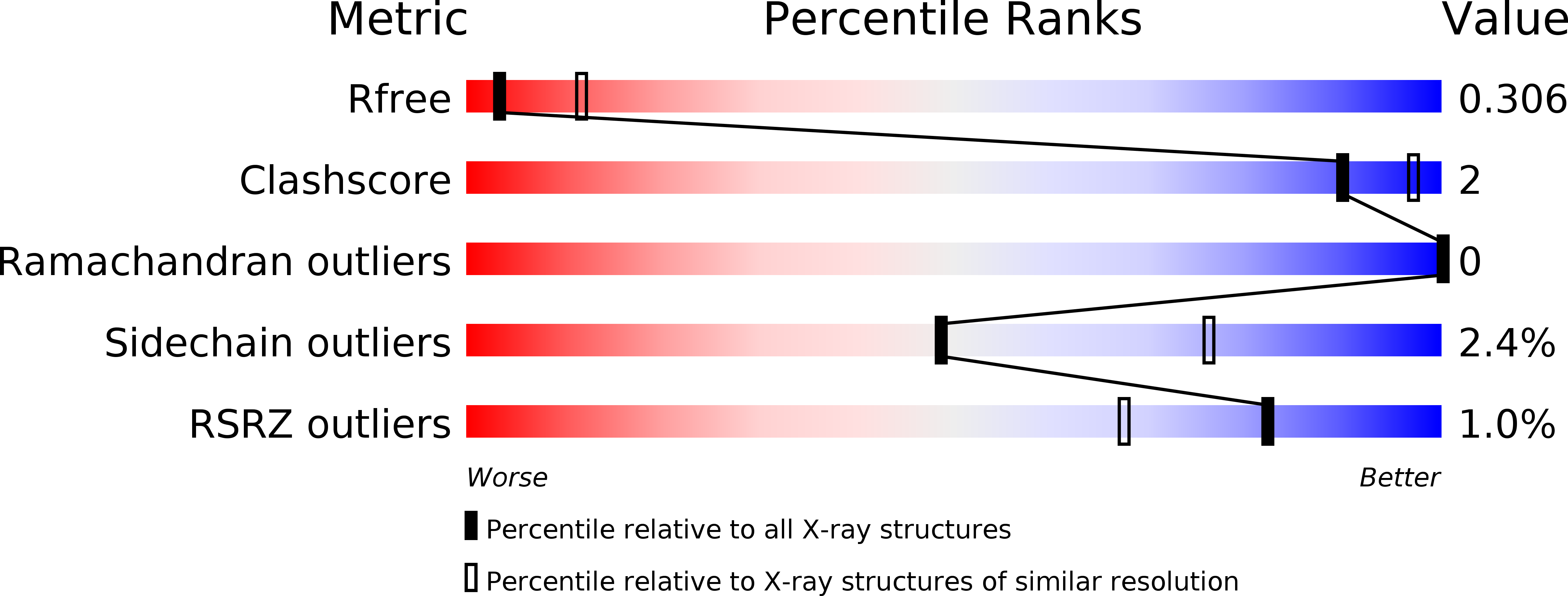
Deposition Date
2014-12-05
Release Date
2015-02-11
Last Version Date
2024-11-20
Entry Detail
PDB ID:
4RWS
Keywords:
Title:
Crystal structure of CXCR4 and viral chemokine antagonist vMIP-II complex (PSI Community Target)
Biological Source:
Source Organism:
Homo sapiens (Taxon ID: 9606)
Enterobacteria phage T4 (Taxon ID: 10665)
Human herpesvirus 8 strain GK18 (Taxon ID: 868565)
Enterobacteria phage T4 (Taxon ID: 10665)
Human herpesvirus 8 strain GK18 (Taxon ID: 868565)
Host Organism:
Method Details:
Experimental Method:
Resolution:
3.10 Å
R-Value Free:
0.27
R-Value Work:
0.24
R-Value Observed:
0.25
Space Group:
I 2 2 2


